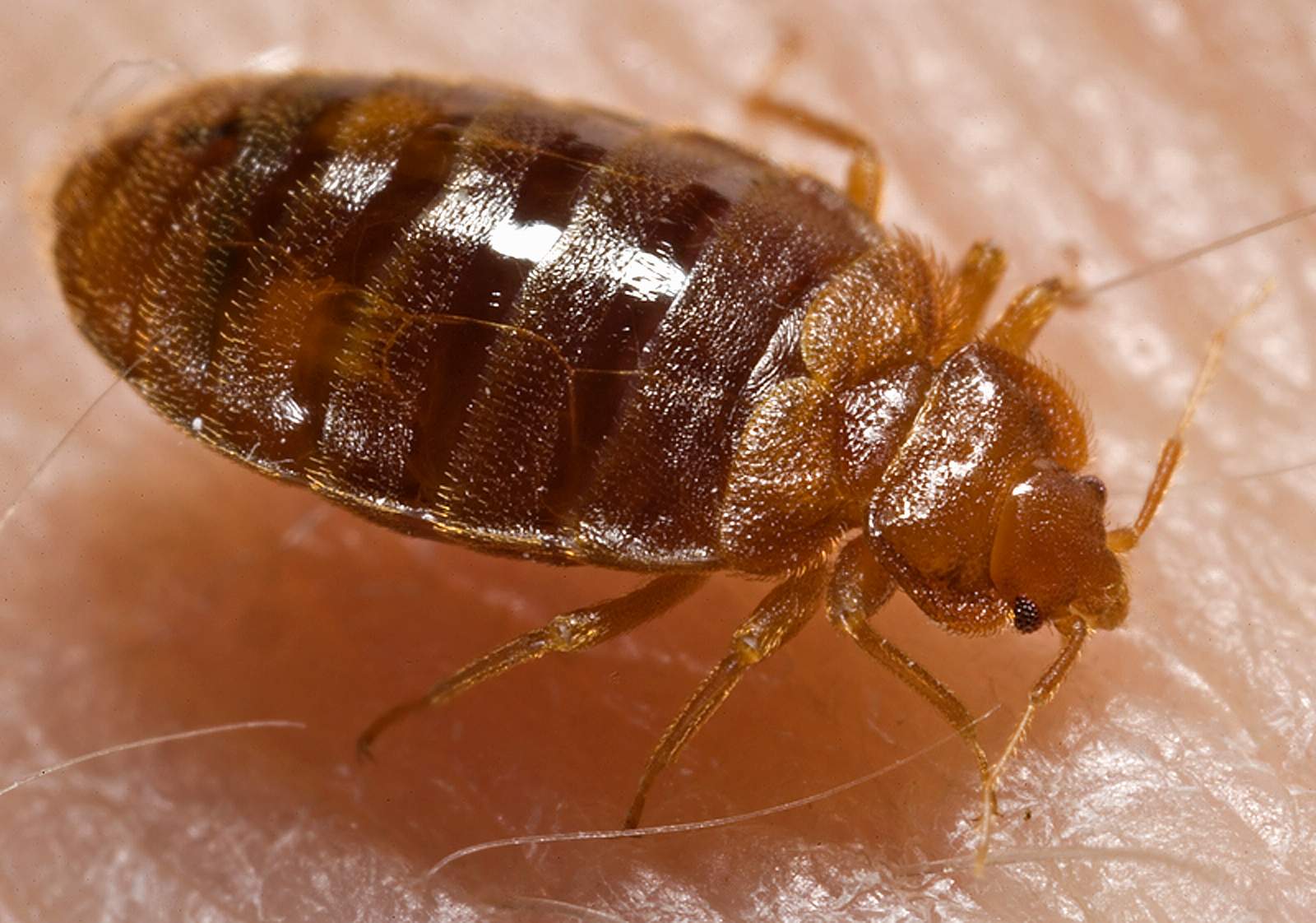The infestation of bed bugs has been a scourge for travelers in recent years, as they are not only found in hotel rooms; but also aboard airplanes in rare cases — and the parasitic pests can potentially be a perplexing nightmare which is quite difficult to eradicate if they wind up in your belongings and invade your home.
The Best Way to Reduce Your Risk of Bed Bugs is to…
Apparently, a recent study concludes that the best way to reduce your risk of bed bugs is to keep your dirty and worn clothing off of the floor, which will supposedly prevent the spread of the vermin to other places, as bed bugs have a tendency to “hitchhike” using the belongings of people.
“Bed bugs have shown a recent and rapid global expansion that has been suggested to be caused by cheap air travel. How a small, flightless and anachoretic insect that hides within its host’s sleeping area manages to travel long distances is not yet clear”, according to the findings of this study conducted by William T. Hentley, who is the lead author of the study and a post-doctoral researcher at the University of Sheffield; Ben Webster; Sophie E. F. Evison; and Michael T. Siva-Jothy in a journal known as Scientific Reports. “Bed bugs are attracted to the odour of sleeping humans and we suggest that soiled clothing may present a similarly attractive cue, allowing bed bugs to ‘hitch-hike’ around the world after aggregating in the laundry bags of travellers. We show that (1) soiled clothing is significantly more attractive than clean clothing to active bed bugs moving within a bedroom sized arena and (2) elevation of CO2 to a level that simulates human occupancy in the same arena appears to initiate search behaviour rather than direct it. Our results show, for the first time, how leaving worn clothing exposed in sleeping areas when travelling can be exploited by bed bugs to facilitate passive dispersal.”
Bed Bugs are Increasingly Difficult to Control
Even worse is that bed bugs have been increasingly developing more of a resistance to insecticides; so they are becoming more and more difficult to control or kill. “The results of this study reveal recent bed bug susceptibility levels to certain chlorfenapyr- and bifenthrin-containing products”, according to the findings of this study at Purdue University from last year as conducted by . “Reduced susceptibility was detected in three and five field strains to chlorfenapyr and bifenthrin, respectively. Detection of reduced susceptibility suggests that certain strains may be segregating toward greater chlorfenapyr and bifenthrin resistance. These results merit continuous resistance monitoring efforts to detect chlorfenapyr and bifenthrin susceptibility shifts. Additionally, to reduce insecticide selection pressures and delay resistance development, adoption of integrated bed bug control strategies that combine chemical and nonchemical methods is recommended.”
What Else Can You Do?
While The Bedbug Registry does seem like a great resource, what if the hotel property at where you are staying has bed bugs but has not yet been reported?
Although keeping dirty laundry off of the floor could help, there are other things you can do to decrease the risk of an encounter with bed bugs.
Originally found in this article written by me are five tips which can be helpful in preventing an encounter with bed bugs — or, at least, prevent the pests from coming home with you — and are repeated in this article for your convenience:
- When traveling, inspect the bed and furniture at anywhere you stay — whether it is in a hotel room or in the home of a relative or friend — by looking for the pests themselves before bringing your belongings inside; or for evidence such as blood stains, droppings and eggs with a flashlight and a magnifying glass in the top and bottom seams, tufts and any rips in the covers of mattresses and box springs.
- Keep luggage off of the floor, bed and soft furnishings such as chairs and couches in the room — the best place to store your belongings is on a luggage rack; or you can place them on the top of a hard piece of furniture such as a dresser or a shelf in the bathroom — and inspect your luggage thoroughly before you leave.
- Albeit inconvenient, wrapping luggage in plastic can help prevent bed bugs from catching a ride to your home — or you can use zippered plastic bags to individually wrap and protect the items within your luggage.
- Immediately wash and dry your clothing on settings which are as hot as possible but at a minimum of 122 degrees Fahrenheit — or store it in a sealed plastic bag until you can — when you return home if you even remotely suspect you have been around or near bed bugs; but otherwise do not bring your clothing into your home under any other circumstances, as they are difficult to remove once introduced into your home environment.
- If you are unfortunate enough to have your home infested with bed bugs, consult this informative article for detailed steps on different treatment options pertaining to how to endure the difficult and time-consuming process of getting rid of them — as well as how to detect and treat bites.
Summary
I have been extremely fortunate to have never encountered bed bugs during my years of travel — and chances are good that you will not encounter them either during your travels; but infestations have been increasing, so it pays to spend a few extra minutes to be as diligent as possible in order to prevent many hours of battling bed bugs later.
One thing which I have consistently done over the years is to immediately place any items of dirty laundry into a plastic bag; twirl the top closed; and placed it in my baggage with the top of the plastic bag tucked under itself before closing the baggage and placing it on a hard smooth surface — and although I have used the plastic laundry bags which are almost always available in a hotel room to stuff my dirty laundry, zippered plastic bags are preferable.
The presence of bed bugs is not indicative of how clean is a hotel room; nor is it only found in budget motel properties, as even the fanciest and most exclusive of hotel properties can be infested with them. Regardless, if you do find evidence of bed bugs in your room, alert a member of the staff — preferably a manager — of the hotel property immediately to report the issue.
If you do get bitten by bed bugs, the worst you will be is uncomfortable with itchy and irritating welts, as they are not known to transmit or spread diseases. Although they are more active in the dark, they will still bite you even when there is light in the room.
By observing the tips in this article, you should be able to successfully prevent bed bugs from hitchhiking in your luggage; but in case they do, unload your luggage either outside of your home — or at the entrance or other room within your home where there are plenty of hard surfaces — and immediately wash and dry them in hot settings at a minimum of 122 degrees Fahrenheit.
Content Providers of the photograph of a bed bug, which is used under the Creative Commons 3.0 license and is found here: Centers for Disease Control and Prevention and Harvard University, Dr. Gary Alpert; Dr. Harold Harlan; Richard Pollack. Photography Credit: Piotr Naskrecki.

